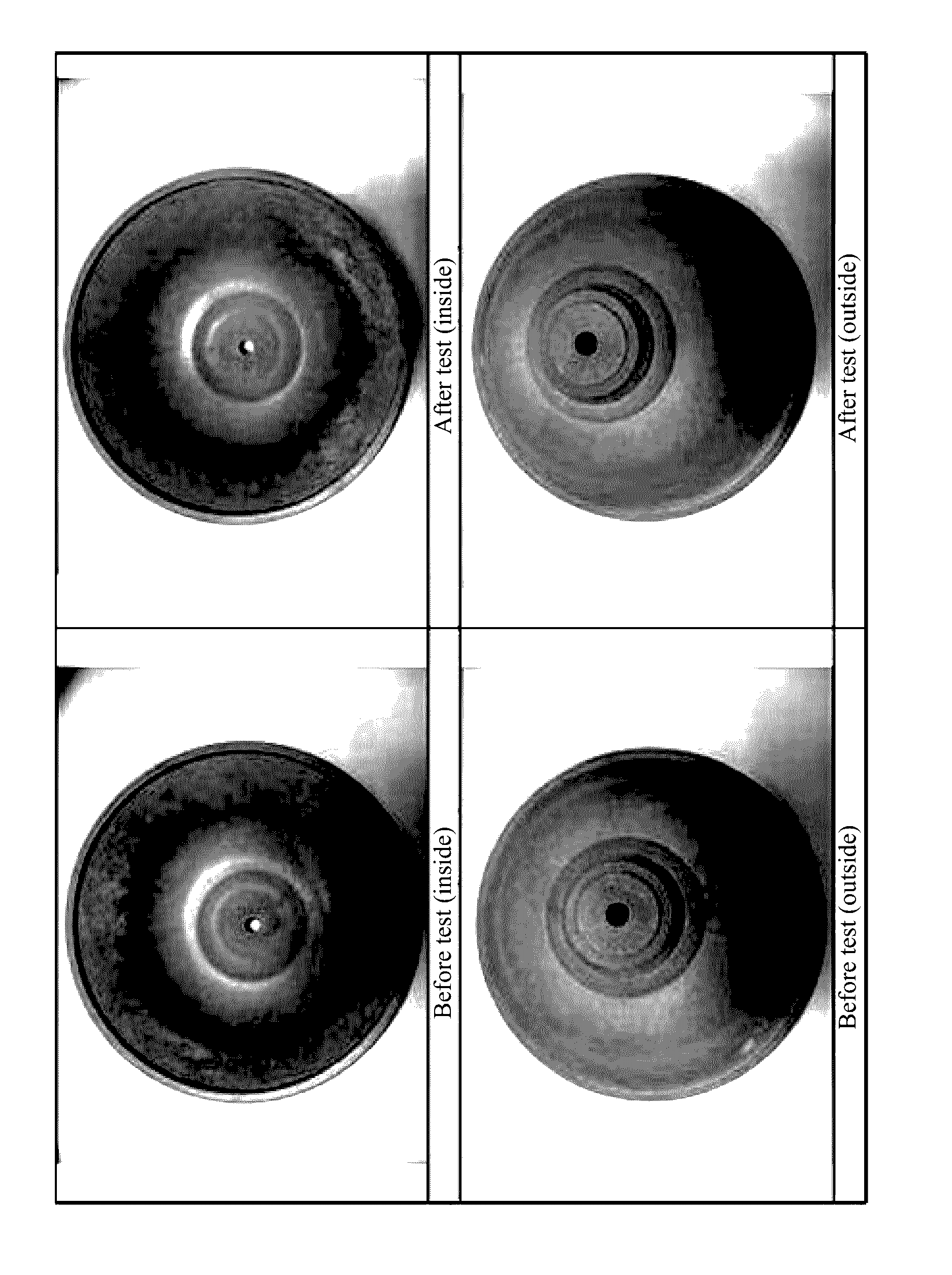Composite material comprising ethylene/propylene copolymer and method for preparing the same
a technology of ethylene/propylene copolymer and composite materials, which is applied in the field of composite materials, can solve the problems of poor paint adhesion, low strength, and low surface tension, and achieve the effects of low cost, high strength, and moderate formula
- Summary
- Abstract
- Description
- Claims
- Application Information
AI Technical Summary
Benefits of technology
Problems solved by technology
Method used
Image
Examples
example 1
[0041]A composite material comprises:
[0042]between 30 and 94 percent by weight of a polymer mixture; the polymer mixture comprising between 69 and 95 percent by weight of polyethylene or polypropylene, between 4 and 30 percent by weight of polyolefin elastomer (POE), and between 0.3 and 1 percent by weight of sorbitol as a rigidity enhancer;
[0043]between 5 and 60 percent by weight of a reinforcing agent;
[0044]between 0 and 40 percent by weight of a strengthening agent;
[0045]between 0.1 and 1 percent by weight of a disproportionation agent, the disproportionation agent being pentaerythritol tetrakis(3-(3,5-di-tert-butyl-4-hydroxyphenyl)propionate);
[0046]between 0.1 and 1 percent by weight of a coupling agent;
[0047]between 0.1 and 1 percent by weight of an antioxidant;
[0048]between 0.1 and 1 percent by weight of an anti-aging agent;
[0049]between 0.1 and 1 percent by weight of an ultraviolet absorber;
[0050]between 0.1 and 1 percent by weight of a lubricant; and
[0051]between 0.1 and 1 p...
example 2
[0067]A method for preparing the composite material using the materials having the weight percentages in Example 1, comprises:
[0068]1) heating a mixer to a constant temperature of between 70° C. and 90° C.; adding and stirring the reinforcing agent; and adding the coupling agent; uniformly mixing the reinforcing agent with the coupling agent to yield and discharge a first reaction mixture; when the stirring speed is at 500 rpm, the reinforcing agent and the coupling agent are stirred for 5 min so that the reinforcing agent and the coupling agent are uniformly mixed;
[0069]2) adding and uniformly mixing the polymer mixture, the disproportionation agent, the antioxidant, the anti-aging agent, the ultraviolet absorber, the lubricant, and the triethyl aluminum in the mixer at room temperature to yield a second reaction mixture; discharging the second reaction mixture; when the stirring speed is at 500 rpm, the materials in 2) are stirred for 5 min so that the materials are uniformly mixe...
example 3
[0073]In the example, the composite material in Example 1 is prepared using the method in Example 2, and specifically, the materials of the composite material have the following groups of weight percentages, as shown in Table 1:
TABLE 1GroupsMaterials123456789Polymer mixture comprising polyethylene / (%)3052709400000Polymer mixture comprising polypropylene / (%)00003040657094Reinforcing agent / (%)60519.35601710205Strengthening agent / (%)3401003402460Disproportionation agent / (%)10.40.10.210.40.110.1Coupling agent / (%)10.40.10.210.40.110.1Antioxidant / (%)10.40.10.110.40.110.6Anti-aging agent / (%)10.40.10.110.40.10.30.1Ultraviolet absorber / (%)10.50.10.110.50.10.10.1Lubricant / (%)10.40.10.110.40.10.40.1Triethyl aluminum / (%)10.50.10.210.50.10.20.1
[0074]In Groups 1-4, the polymer mixture is prepared using polyethylene, polyolefin elastomer (POE), and sorbitol as a rigidity enhancer, thus the preparation of the composite material involves ethylene polymers. In Groups 5-9, the polymer mixture is prepa...
PUM
| Property | Measurement | Unit |
|---|---|---|
| temperature | aaaaa | aaaaa |
| temperature | aaaaa | aaaaa |
| temperature | aaaaa | aaaaa |
Abstract
Description
Claims
Application Information
 Login to View More
Login to View More - R&D
- Intellectual Property
- Life Sciences
- Materials
- Tech Scout
- Unparalleled Data Quality
- Higher Quality Content
- 60% Fewer Hallucinations
Browse by: Latest US Patents, China's latest patents, Technical Efficacy Thesaurus, Application Domain, Technology Topic, Popular Technical Reports.
© 2025 PatSnap. All rights reserved.Legal|Privacy policy|Modern Slavery Act Transparency Statement|Sitemap|About US| Contact US: help@patsnap.com

